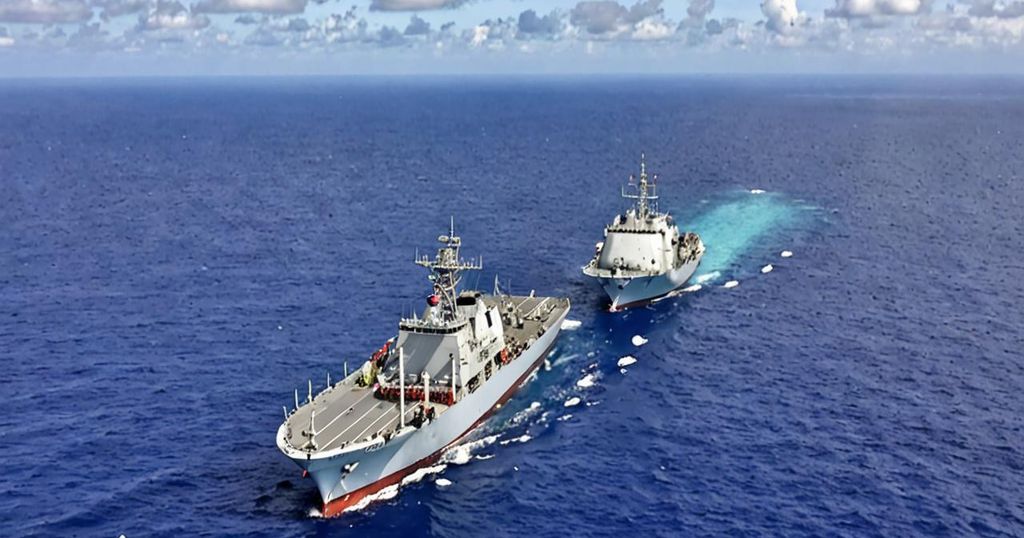The Republic of the Philippines continues to assert its maritime rights in the South China Sea, specifically in the Sabina Shoal, despite ongoing discussions with the People’s Republic of China to reduce tensions in the area. There are apprehensions that the Sabina Shoal could potentially become a focal point for conflict between the two nations, as China has been vocally opposing the increased presence of the Philippines in the disputed region.
A recent report from the Global Times accused the Philippines of endeavoring to construct a “maritime base” at the Sabina Shoal, prompting a response from Rear Admiral Roy Vincent Trinidad, a spokesperson for the Philippine Navy. Trinidad emphasized the Philippines’ entitlement to take appropriate actions to safeguard its territory and sovereign rights within its exclusive economic zone (EEZ).
The Philippines dispatched the BRP Teresa Magbanua to the Sabina Shoal in May to monitor and prevent alleged illicit activities by China. While concerted diplomatic efforts are underway to alleviate tensions, the Philippines remains resolute in upholding a robust presence in the area to protect its maritime interests.
In a recent bilateral consultative mechanism meeting between the Philippines and China, both parties reached an agreement to de-escalate tensions in the South China Sea. This accord aims to manage differences through discussions and enhance coordination and cooperation while safeguarding maritime interests.
Analysts have highlighted that the Sabina Shoal is merely one of several areas within the Philippines’ EEZ that could potentially provoke disputes with China. They underscore the necessity for the Philippines to maintain a continuous presence in the region and enhance its awareness of maritime domains with the support of other stakeholders and nations.
Although concerns exist regarding a potential divide between the defense ministry and administrative officials, experts assert that the military’s efforts to protect the Philippines’ maritime interests do not contradict diplomatic endeavors to reduce tensions with China. They stress the importance of reinforcing diplomatic approaches with resolute statements and actions from the military.
The territorial disputes in the South China Sea encompass not only the Philippines and China, but also involve other countries such as Malaysia, Brunei, and Vietnam. The tribunal ruling in 2016 acknowledged Manila’s sovereign rights in the waterway, but China has refused to acknowledge the decision, contributing to ongoing tensions in the region.
The Philippines’ firm stand in protecting its maritime claims is viewed as a crucial aspect of negotiations with China. While the objective is to alleviate tensions and minimize conflict, the Philippines remains committed to safeguarding its territory and sovereign rights in the South China Sea.
In summation, the Philippines’ assertion of its maritime rights in the South China Sea, particularly in the Sabina Shoal, underscores the intricate dynamics of the territorial disputes in the region and the ongoing efforts to reduce tensions through diplomatic means while maintaining a sturdy and unwavering presence to protect its maritime interests.

Leave a Reply